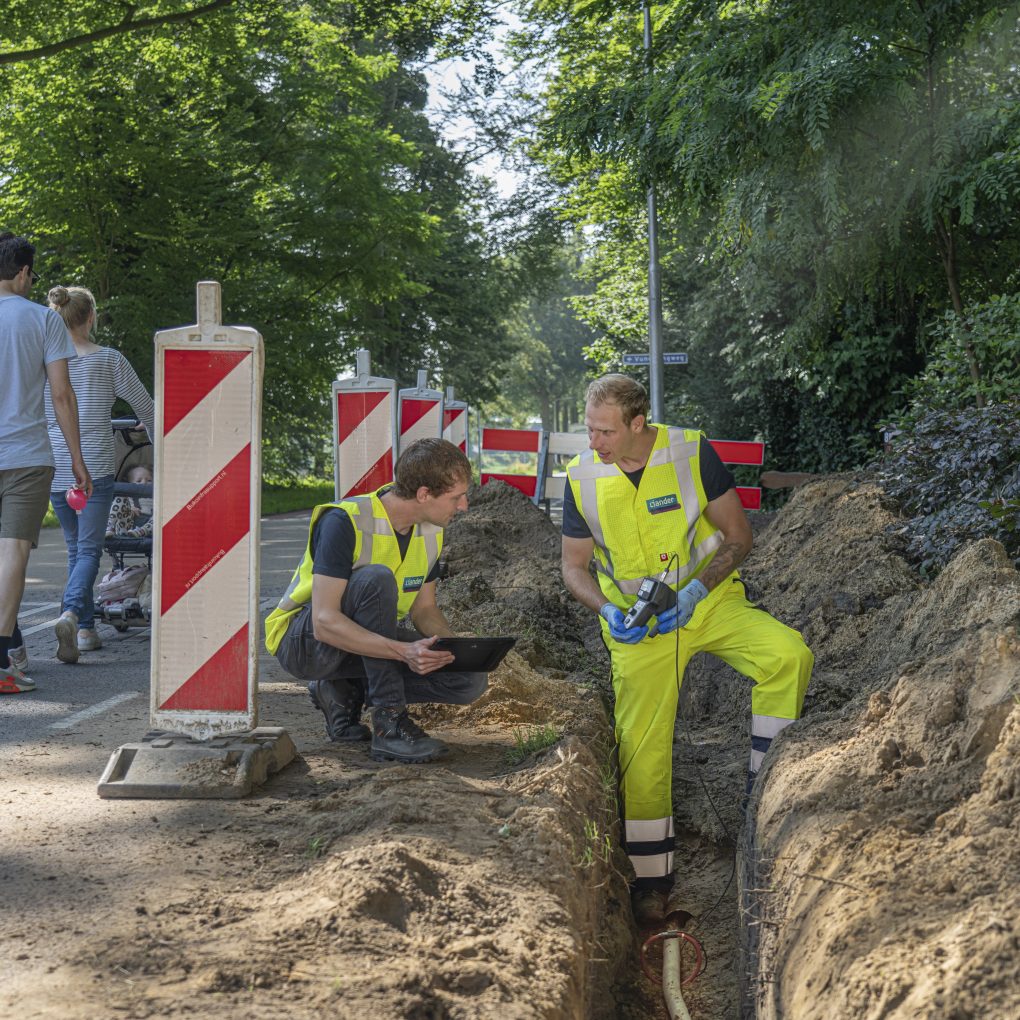
Shortage on the electricity grid affects everyone
Maarten Otto, Alliander’s CEO: “The Netherlands boasts one of the world’s most reliable energy systems. Having access to energy has always been a given; however, that assumed certainty is really being put to the test with the energy transition. In the coming years, we will be working hard on the energy system of the future and that is a huge endeavour. We are making significant expansions to the grid and are working on smart solutions to meet the high energy demand of today and tomorrow. However, all these efforts will not completely prevent society from experiencing inconvenience. Due to congestion, in the coming years businesses and consumers alike will have to wait longer than desired for a connection or access to additional capacity. Realising the energy system of the future means overhauling the current grid which will inevitably lead to nuisance and inconvenience. It is therefore important that government bodies take on a coordinating role in accomplishing an integral design for the energy system. This also includes making choices concerning spatial planning and setting aside land. In addition, we ask stakeholders, at both local and national level, to work together with us. The energy transition is a major endeavour with a major impact on society, and it requires all of us to join forces and put our shoulders to the wheel.”
High pace
As a result of economic growth, the digitisation of society and other factors, electricity consumption is rapidly increasing. The arrival of data centres is one contributing factor for example. In the first half of the year, the consumption of these centres in the Netherlands was 1,725 GWh, this is comparable to the average consumption of approximately 630,000 households. It is expected that the electricity demand of these centres will increase more than fivefold within the next ten years. And on the supply side, the amount of sustainable energy generated by solar and wind farms is also increasing. Solar farms already take up the space of around 7,700 soccer fields and new solar farms built between now and 2030 will add another 17,000 soccer fields to this number.
It is obvious that the demand for electricity is growing at a high pace. The amount of generated sustainable energy available for feed-in to the grid is also increasing rapidly. As a result, the impact of the energy transition is becoming more and more noticeable in society and is increasingly causing inconvenience. The grid is already saturated in several places, like in Amsterdam, for example, where maximum capacity was recently reached in two areas. This occurs in more and more places, like in a part of Leeuwarden for example, where the arrival of several large companies and a new residential area has nearly doubled the demand for electricity in just one year, reaching the grid’s maximum capacity. And bottlenecks regarding grid feed-in of sustainably generated electricity are already occurring in other places in the province of Friesland, as well as the province of Flevoland, the Achterhoek region and the northernmost region of the province of Noord-Holland.
Social impact
Where the grid capacity is fully used, businesses must wait longer to get connected or be granted expanded capacity. Consumers, too, will experience an increasing amount of inconvenience. For example, due to longer waiting times for upgrading the home’s connection for, for example, a heat pump or a EV charging station. In just the first half of this year, the number of connected public EV charging stations in network operator Liander’s service area increased by approximately 1,200 to over 9,600. And it is expected that by the end of 2025 an additional 20,000 electric transport charging stations will need to be connected. To achieve this, in the coming years twice as many charging stations will have to be connected to the grid every day. Consumers will also notice that the electricity they generate themselves with solar panels cannot be fully fed-in to the grid at any time of the day. There were already more than 1,000 complaints concerning this issue within the first six months of the year, an increase of 35% compared to the same period last year.
Lastly, the energy transition will literally be visible on the streets. In many places, the streets will have to be overhauled in the coming years for the construction of new and heavier duty cables. Furthermore, in the next 10 years 4,000 to 12,000 medium-voltage stations will need to be installed in order to handle the increased supply of electricity effectively and without outages.
More work completed
In the first six months of this year, the Covid-19 virus still played a role in Alliander’s ability to complete all its work. The shortage of technical personnel is causing some delay, and spatial planning and permit procedures in combination with a shortage of materials are resulting in longer lead times for the work that we have to complete. Despite these challenges, Alliander expects to be able to complete more work than last year by taking a smarter approach towards planning. For example, in the first half of the year projects planned to be carried out in busy shopping streets were brought forward. This, literally, provided the space to carry out the work and, more importantly, it limited the nuisance and inconvenience for the businesses that were forced to keep their shops closed for a large part of the first half of the year due to the pandemic.
In the first half of 2021, 516 new medium-voltage stations were built, 81 more than in the same period in 2020 (+19%). Total investment in the power grid increased with €60 million to €465 million (+15% compared to the first six months of 2020).
Walter Bien, CFO: “Up to 2030, we expect our investments to increase to around €1.2 billion per year, twice the amount of the annual investments of five years ago. Given the rapid pace at which the energy transition is proceeding, these investments cannot be postponed. These investments, aimed at ensuring the success of the energy transition, are in addition to regular maintenance work. Considering these substantial investments, we recently called on our shareholders to provide a capital injection. This will enable us to strengthen our own equity so together we can shape the energy system of the future.”
Financial results
Alliander’s net profit for the first half of 2021 came in at €119 million, €27 million higher than the same period last year (2020: €92 million). Operating income for the first six months increased with €71 million to €1,081 million (2020: €1,010 million). Over the last six months, total operating expenses increased by €46 million compared to the first six months of 2020. This increase in costs is mainly due to the higher costs charged by TenneT, the increase in costs associated with grid losses, and by increasing depreciation, which in turn is caused by the increase of our investments in recent years in connection with the energy transition.
